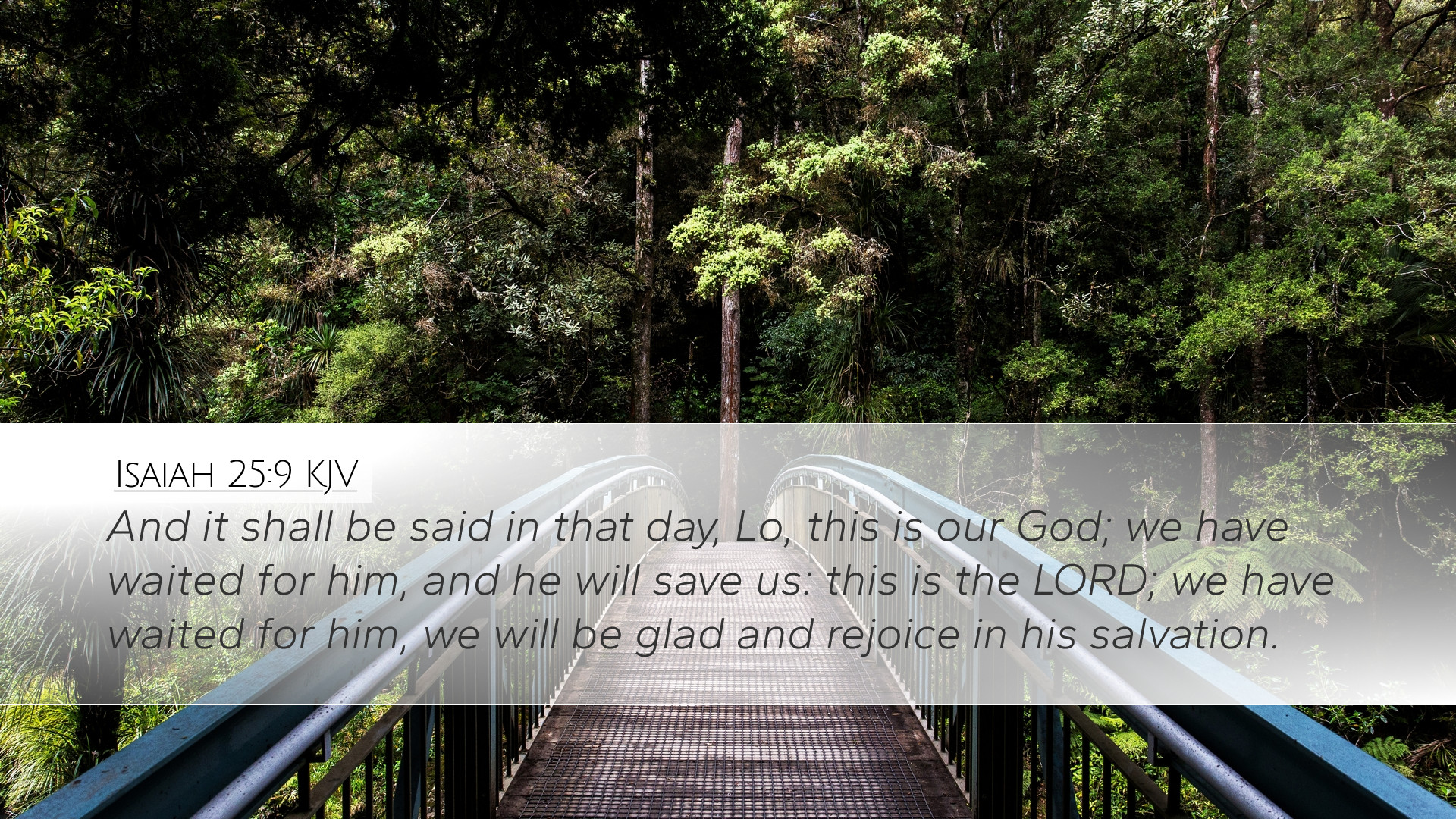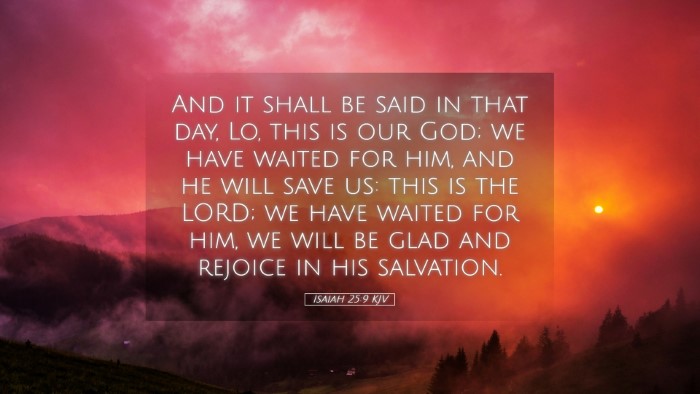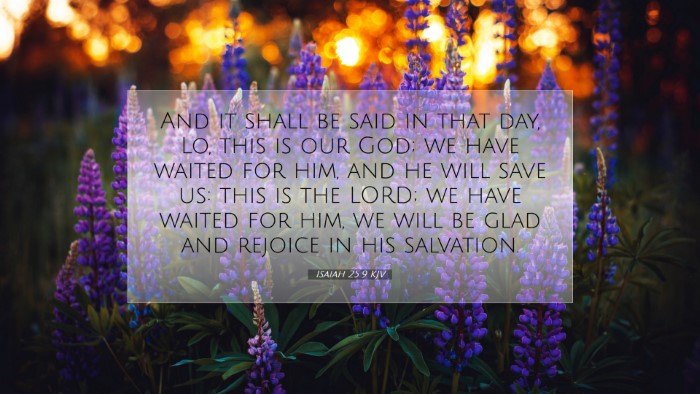Commentary on Isaiah 25:9
Isaiah 25:9 states: "And it will be said in that day: Lo, this is our God; we have waited for him, and he will save us; this is the LORD; we have waited for him; we will be glad and rejoice in his salvation." This verse serves as a beacon of hope, encapsulating the anticipation for divine intervention and the climactic joy associated with salvation. Below is a detailed commentary derived from various public domain commentaries by respected theologians.
Contextual Overview
The context of Isaiah 25 is essential for understanding the depth of this verse. Throughout the preceding chapters, Isaiah speaks of judgement and hope—often contrasting the fate of the wicked with the promises extended towards the faithful. As Isaiah transitions into this prophetic declaration, he provides a powerful message of expectation and fulfillment.
Exegesis of Isaiah 25:9
- Recognition of God:
The phrase "Lo, this is our God" emphasizes a decisive recognition of God's character and His redemptive nature. Albert Barnes elaborates on this by noting that the acknowledgment of God among His people signifies the culmination of faith and prophetic promise.
- Waiting in Hope:
"We have waited for him," signifies patience and faithfulness. Matthew Henry points out that the wait is not passive but active, filled with longing and anticipation as it portrays the Israelites' trust in God's promises throughout their struggles and sufferings.
- The Assurance of Salvation:
This verse concludes with the declaration of salvation: "He will save us." Adam Clarke highlights that this assurance reflects a collective understanding among the people regarding God's ability and willingness to save. It encapsulates both spiritual and physical rescue, thereby addressing the holistic nature of salvation.
- Joy and Rejoicing:
The final promises in the verse culminate in joy and rejoicing. This theme of rejoicing is prominent throughout Scripture and reminds believers of the inherent joy tied to God’s salvific work. Matthew Henry emphasizes that true joy is found in the fullness of God’s salvation, which transcends mere temporal satisfaction.
Theological Reflections
This verse profoundly reflects key theological concepts such as:
- Hope and Expectation:
The faithful’s longing for divine salvation showcases the imperative of hope within the human experience. Isaiah’s affirmation that God will fulfill His promises serves as a reminder to contemporary believers of the importance of hope during trials.
- Collective Faith:
The use of 'we' underscores communal faith. It invites the congregation to unite in their waiting and expectations. Albert Barnes notes that collective belief strengthens individual faith and enhances the community’s worship experience.
- The Nature of Salvation:
Salvation is portrayed not only as a future event but as an ongoing reality that encompasses both present deliverance and ultimate redemption. This presents a layered understanding that resonates with both Old and New Testament theology.
Practical Applications
The insights derived from Isaiah 25:9 provide various applications for contemporary believers:
- Encouragement in Trials:
As Christians face challenges, the reminder of waiting expectantly for God’s salvation can be a source of immense comfort and strength.
- Community Worship:
Churches can implement this collective faith in worship practices, fostering an environment of shared hope and anticipation in God’s promises.
- Evangelistic Motivation:
Understanding salvation as both a present and future reality can inspire evangelistic efforts, encouraging believers to share the message of hope found in Christ.
Conclusions
Isaiah 25:9 encapsulates a profound truth about the character of God as Savior and the response of believers. As explored through the insights of Matthew Henry, Albert Barnes, and Adam Clarke, the verse serves as a powerful reminder of the significance of hope, acknowledgment, and the great joy found in God’s deliverance. In a world often filled with despair, this verse stands as a testament to the assured expectation and joy that the faithful can have while waiting for the fulfillment of God's salvific promises.


